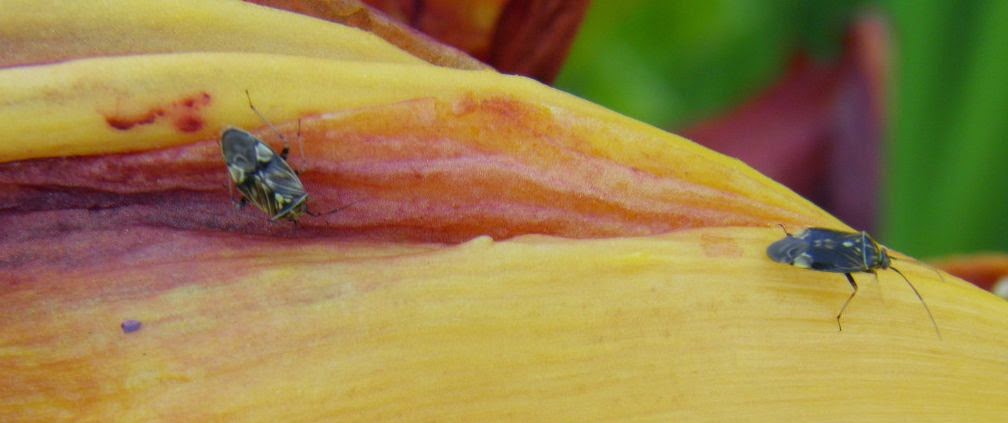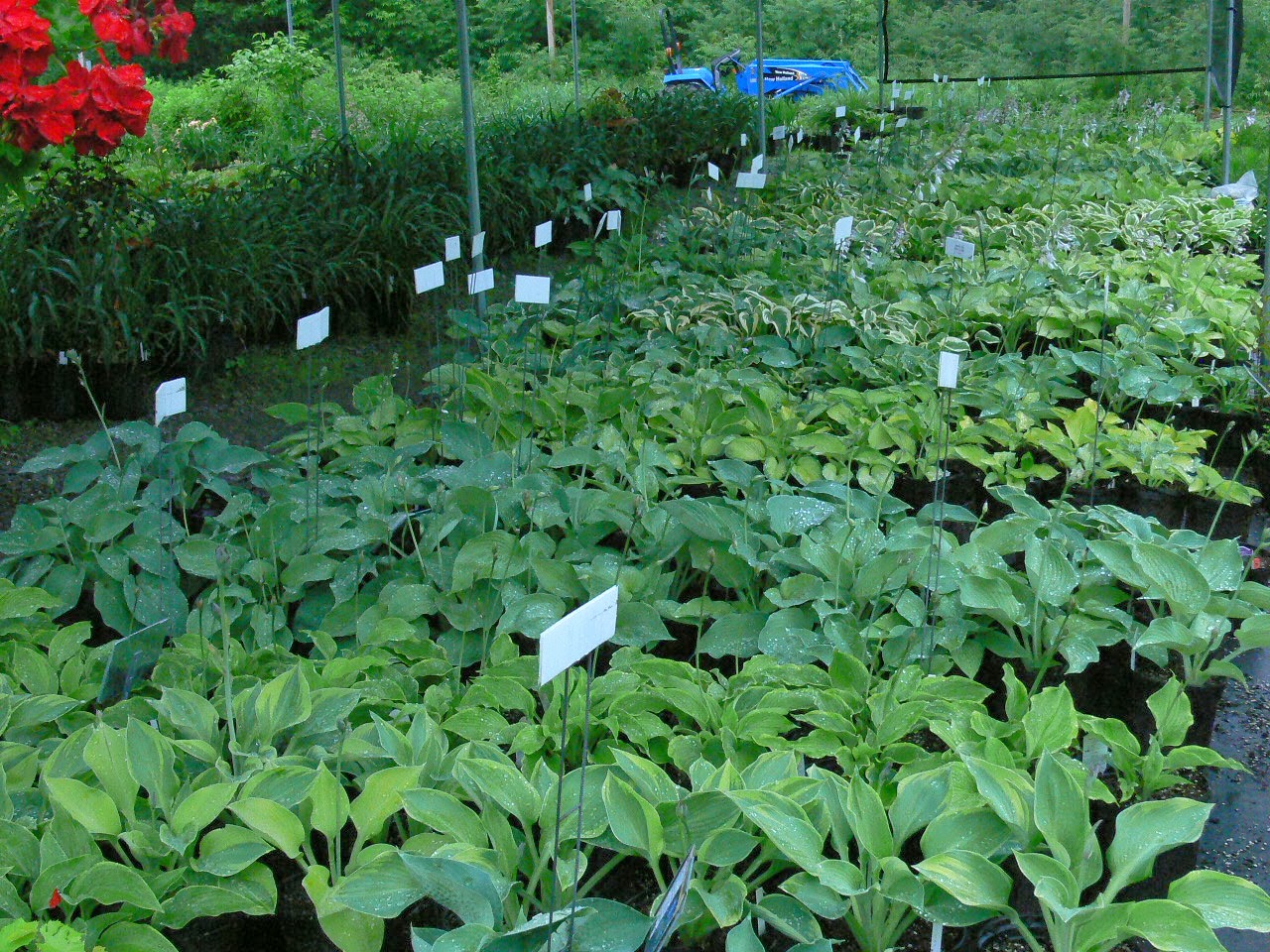Friday, July 25, 2014
Daylilies are in full bloom at Vermont Flower Farm and visitors from all over North America are visiting our state. Many are taking a break from their travel as they stop to tour our gardens and ask questions. A frequent question is what is the name of the small insect that flies as gardeners approach flowers and what is the insect that carves trails and tracks in the petals, especially in the darker purples and reds of daylilies. The answer is the same--the very insidious Tarnished Plant Bug, Lygus lineolaris.
Over the years reports of the Tarnished Plant Bug have increased annually and inspectors from the Department of Agriculture who visit each year as part of Vermont's relicensing format report the same findings. I have spoken with many vegetable growers and they have reported the same issues and control has become a difficult but imperative responsibility.
Yesterday I was out early in the fields with friend and helper Michelle who was helping with deadheading' She was waiting for it to dry up enough so she could get back to painting our house. Gail and I have a dislike for painting so we trade off work with Michelle at her house during the off season so the arrangement works well for us. As we deadheaded what amounted to 8-five gallon buckets of spent daylily blooms, many visitors stopped to chat. They all wanted to know our theory for this monumental, time consuming task.
Deadheading daylilies makes them look cleaner and prevents some blooms from turning into seed pods which for us is a less positive way to use available plant nutrients. We would rather see the plants grow a better root system and grow larger and more fans for subsequent years than grow seed pods. We do not hybridize so this is a good reason to clean the plants up. But the real reason I think it's imperative to do this is because the Tarnished Plant Bug lays eggs inside the spent blooms which then drop to the ground and start another life cycle with the TPB. Stand in front of a daylily in your garden and you might be able to see the bugs come and go and you can confirm this for yourself.
The question then is how to get rid of these bugs. We have a couple products that work for us as we try to stay away from harsh chemicals but still minimize the damage and repeated cycles of more bugs. A Plainfield vegetable farmer recommended that we use pyrethrum based PyGanic, an OMRI listed product used by organic farmers. At $80 a quart it seems expensive but it does the trick and lasts quite a while. The recommended usage is two pints per acre mixed with 100 gallons of water. That may seem like a lot of spray but it's not just the buds that must be sprayed but the plant and other plants in the area. This is a great reminder to get rid of weeds--which for us has been a terrible challenge ever since the big floods a few years back.
We have also been successful using horticultural oils early in the season. These are the same products that orchardists use early on to spray fruit trees. The oils suffocate the eggs/small insects and also work but you must keep up with the spraying in May to take care of those early infestations.
Hot, dry summers seem to encourage more and more cycles of this bug and having fields surrounded by other weedy fields encourages the problem. Think through these ideas and give your daylilies, especially the darker colored ones a good inspection and see what kind of a problem you might have. Sooner is better on a plan to get rid of this bug.
George Africa
The Vermont Gardener
Vermont Flower Farm
On Facebook as George Africa and also as Vermont Flower Farm and Gardens
On Twitter at vtflowerfarm
Always here to help you grow your green thumb!






























